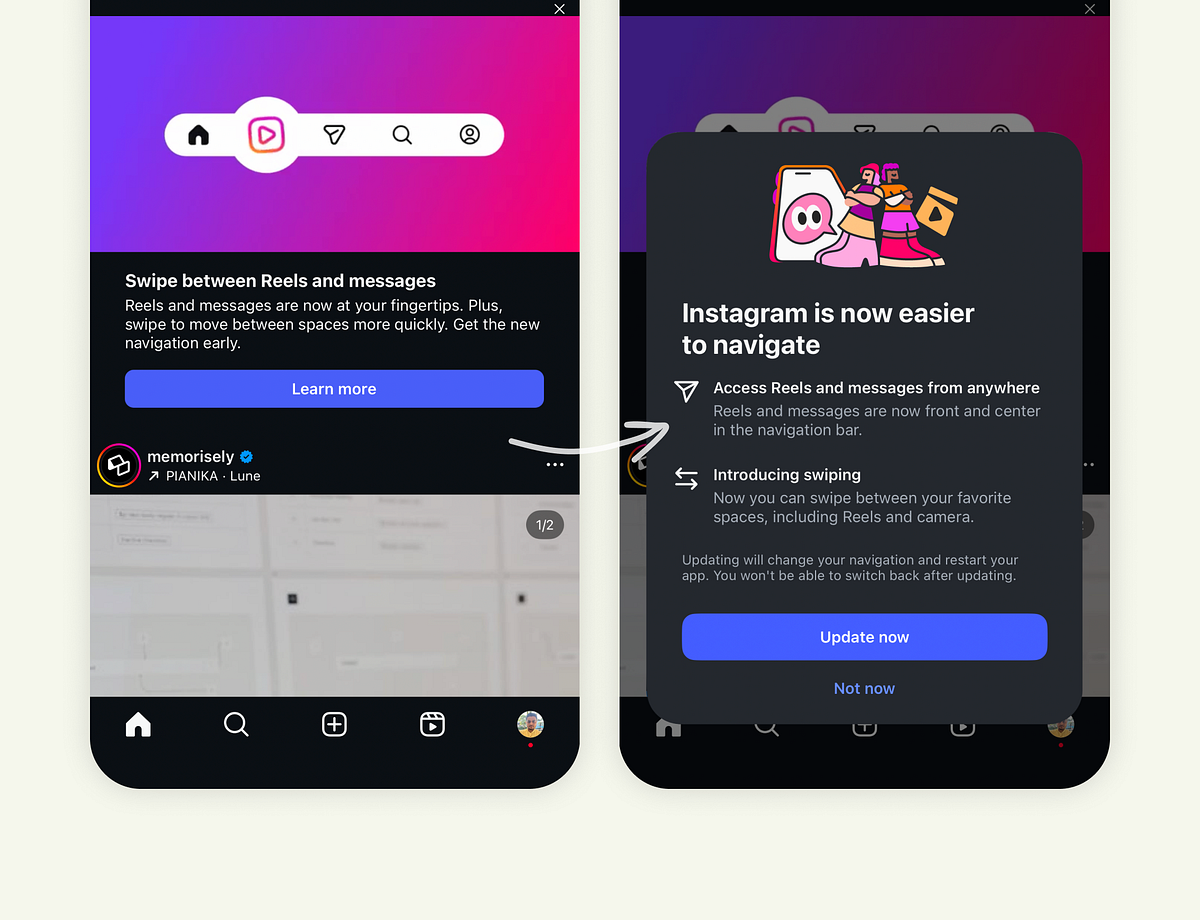
"Instagram's latest navigation update isn't just a feature change; it's a lesson in how to communicate design changes without frustrating millions of users. If you've been using Instagram for a while, you know this isn't how they used to do things. In the past, updates just appeared. You'd open the app one morning and the navigation bar was different, buttons were rearranged, and muscle memory went out the window. No heads-up. No explanation. No sense of control. This time, though, Instagram learned from its mistakes. They rolled out the redesign in a way that respected user trust, reduced friction, and actually felt considerate. Let's break it down. They Informed Users First Before changing anything, Instagram showed an announcement right inside the feed. "Swipe between Reels and messages." The banner explained the upcoming navigation update with a short sentence, a clean visual, and a "Learn more" button. It didn't interrupt your session. It didn't feel forced. It invited curiosity."
"They Explained What's New Once you tap "Learn more," you're shown exactly what's going to happen next. The overlay breaks down two things: What's changing: Reels and messages are now front and center. Why it's better: You can access them faster and swipe between spaces. It's clear, visual, and to the point. Then comes the real UX gem - the choice. Two buttons: "Update now" or "Not now.""
"That moment of choice matters. It gives users a sense of control and reduces the psychological resistance that usually comes with UI changes. People don't hate new designs; they hate feeling blindsided by them. They Onboarded After the Update After you accept the change, Instagram doesn't just switch the layout and leave you hanging. The new navigation appears instantly, but with a quick overlay explaining how to use it and"
Instagram announced a navigation redesign inside the feed before making any change, using a short banner and a "Learn more" option. The process explained what would change and why, using a clear overlay that highlighted Reels and messages as front-and-center and showed benefits like faster access and swiping between spaces. The rollout offered an explicit choice with "Update now" or "Not now," preserving user control and lowering resistance. After acceptance, the new navigation appears with an onboarding overlay that demonstrates how to use it. The approach prioritized user trust, reduced friction, and avoided blindsiding users.
Read at Medium
Unable to calculate read time
Collection
[
|
...
]